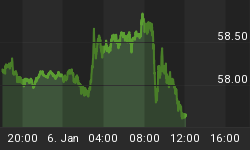Existing Home Sales Decline More Than Expected
Existing home sales in August dipped 4.8% month-over-month to a seasonally adjusted rate of 5.31 million units.
Although a decline of 1.7% was anticipated, the actual number was below any estimate in the Bloomberg Consensus Range of 5.4 to 5.6 million.
Though slowing in August, existing home sales are still healthy and trending higher. Existing home sales came in at a lower-than-expected 5.31 million annual rate in August which is the lowest since April. July was revised down just slightly but is still an 8-year high at 5.58 million. At 6.2 percent, growth in year-on-year sales is the lowest since February. The year-on-year median price, up only 4.7 percent to $228,700, is the lowest since August 2014. The report cites no special reasons behind August's softness, but notes that it follows prior strength, in fact six months of strength.
With the in dip sales, supply relative to sales is less tight, at 5.2 months from 4.9 months in the prior two months. But there's still a lack of homes on the market, evidenced by a comparison with the year-ago supply at 5.6 months.
Details show high mid-single digit declines across regions except the Northeast where the August sales rate was unchanged. Year-on-year, data are very well balanced with high mid-single gains for all.
Despite low mortgage rates and soft prices, the housing sector isn't exactly on fire. Watch for FHFA house prices on tomorrow's calendar, which are expected to rise, and also for new home sales on Thursday which are also expected to rise.
Still Healthy?
What caught my eye in the analysis was the statement by Bloomberg that sales were "still healthy and trending higher." Let's investigate that claim two different ways.
Existing Home Sales in Number of Units

For several years prior to and shortly after the 2001 recession, existing home sales were trending at about 5.2 million units at a seasonally-adjusted annualized rate.
During the bubble years, existing home sales rose as high as 7.26 million homes in September of 2005. In July of 2010, sales fell to 3.45 million units, less than half of the peak bubble rate.
Home sales are now back to about where they were between January 1999 and August 2002.
Existing Home Sales in Number of Units Population Adjusted

In the above chart, I take the civilian noninstitutional population into consideration.
The civilian noninstitutional population is defined as people 16 years of age and older residing in the 50 States and the District of Columbia who are not inmates of institutions (penal, mental facilities, homes for the aged), and who are not on active duty in the Armed Forces.
On a population-adjusted basis, the number of units sold per thousands of people was pretty steady at about 25 units from 1999 to August 2002. It hit a bubble peak of 32 in September of 2005 and crashed to 14.5 in July of 2010.
For August, the number is 21.15 per 1,000 people, a significant gap to years just prior to the housing bubble.
Trending Higher or Chopping Around?

In the second chart I was pretty generous to Bloomberg in reference to the idea that existing home sales are trending higher.
There was certainly a clear trend between July 2010 and July 2013. Since then, existing home sales have mainly been chopping around sideways.
It's often easy to play games with trend lines to support one's view.
















